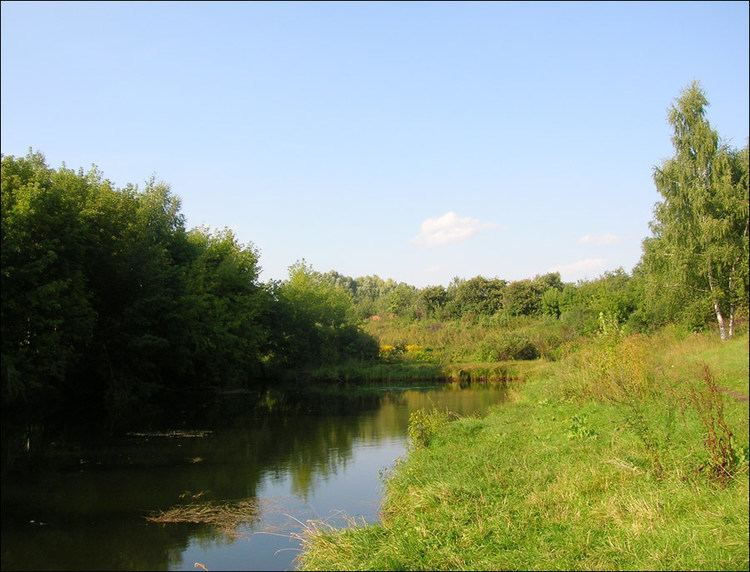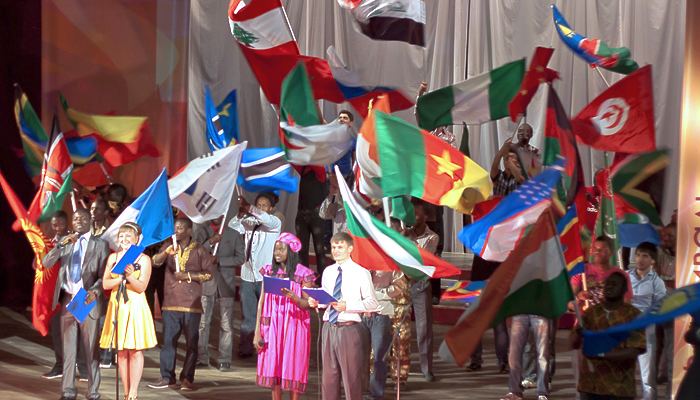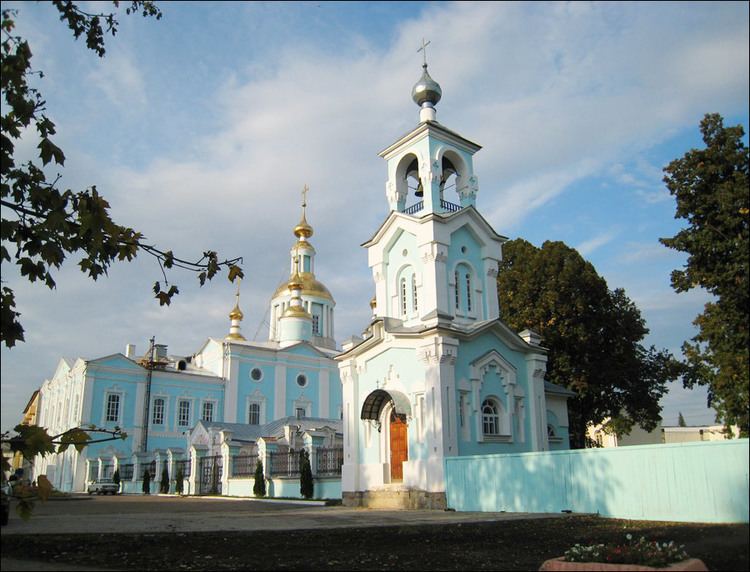Population 280,161 (2010) Founded April 17, 1636 | ||
 | ||
University Tambov State University | ||
Map of Tambov
Tambov (Russian: Тамбов; [tɐmˈbof]) is a city and the administrative center of Tambov Oblast, Russia, located at the confluence of the Tsna and Studenets Rivers, about 480 kilometers (300 mi) south-southeast of Moscow. Population: 280,161 (2010 Census); 293,658 (2002 Census); 304,600 (1989 Census).
Contents
- Map of Tambov
- Tambov state university medical faculty
- Miss juliet tepreytambovcontestantmiss ghana russia 2014
- Etymology
- History
- Administrative and municipal status
- Economy
- Transportation
- Climate
- Culture
- Sports
- Notable people
- Twin towns and sister cities
- References

Tambov state university medical faculty
Miss juliet tepreytambovcontestantmiss ghana russia 2014
Etymology

The name "Tambov" originates from the Moksha language word "томба" (tomba) meaning "abyss", or "deep pool".
History

Tambov was founded by the decree of Tsar Mikhail Fyodorovich on April 17, 1636 (Old Style). Originally, it was a border fortress against attacks by the Crimean Tatars, but it soon declined in importance as a military outpost. It then became the region's administrative and trade center.
Roman Boborykin, the emperor's court menial (stolnik) and voivode was the town's first builder. Thanks to his experience, the fortress had been completed rapidly. Tambov was granted city status in 1719.
In 1779, Tambov Viceroyalty was formed, and on August 16, 1781, Empress Catherine the Great approved the city's coat of arms depicting a beehive, symbolizing the town's hardworking residents. This viceyorality was formed from southern parts of Ryazan Viceyorality and northern parts of Voronezh Viceyorality. In March 1786, the disgraced Russian poet and statesman Gavrila Derzhavin was appointed the governor of Tambov Governorate—a post that he held until December 1788. Even during that brief tenure he accomplished a great deal: a theater, a college, a dancing school, a printing business, an orchestra, and a brickyard were built. Tambov later erected a monument to Derzhavin.
In November 1830, during the Cholera Riots in Russia, the citizens of Tambov attacked their governor, but they were soon suppressed by the regular army. Later in the 19th century Tambov became a significant cultural center that supported a growing number of schools, libraries, and other institutions. By 1897, its population was more than 50,000 people.
During the Civil War, in 1920–1921, the region witnessed the Tambov Rebellion—a bitter struggle between local residents and the Bolshevik Red Army. In 1921, a Tambov Republic was established, but it was soon crushed by the Red Army under the command of Mikhail Tukhachevsky. Between 1928 and 1934, Tambov became okrug center in Central Black Earth Oblast. After dissolving the oblast on 13 June 1934, it became the raion center in Voronezh Oblast.Tambov finally became center of Tambov Oblast, which was created from oblasts of Voronezh and Kuybyshev on 27 September 1937. The oblast had present form after separation of Penza Oblast (formerly part of Kuybyshev one) on 4 February 1939.
During and after World War II, most of the Malgré-nous from Alsace-Moselle were jailed in "Camp #188" at Tambov. Between 4,000 and 10,000 French people died in this camp. In 1991, a 360-meter (1,180 ft) high guyed television antenna was built in Tambov.
Administrative and municipal status
Tambov serves as the administrative center of the oblast and, within the framework of administrative divisions, it also serves as the administrative center of Tambovsky District, even though it is not a part of it. As an administrative division, it is incorporated as the city of oblast significance of Tambov—an administrative unit with the status equal to that of the districts. As a municipal division, the city of oblast significance of Tambov is incorporated as Tambov Urban Okrug.
Economy
The city is highly industrialized.
Transportation
The city is a large industrial center and is served by Tambov Donskoye Airport. Tambov is also the location of the Tambov air base of the Russian Air Force. A railway connection between Tambov and Moscow was first established in 1871. The railroad goes on to Saratov and is not electrified. There are also small suburban trains, or "rail buses" that connect Tambov Oblast's capital with other cities, such as Michurinsk, Uvarovo, and Kirsanov.
Climate
Tambov has a humid continental climate (Köppen climate classification Dfb tend to Dfa). The average temperature of the coldest month (February) is about -8 °C, the warmest month (July) – about +20 °C. Because of the southerly location average annual temperature in Tambov is about 2 degrees higher than in Moscow. Annual rainfall ranges from 400 to 650 mm, more than half of them (about 270 mm) of precipitation falls in the warm season. Duration of the warm period is 154 days.
Culture
The city is home to two universities, Tambov State University and Tambov State Technical University. The Tambov Art Gallery houses a vast collection of canvases by Russian and West-European artists. Russia's oldest drama theater is located in Tambov, as well as two universities, two military colleges, a musical school, a museum of local lore, and other cultural institutions.
Sports
Tambov's professional association football team, FC Tambov, plays in the Russian Football National League.
Notable people
Twin towns and sister cities
Tambov is a sister city of:
